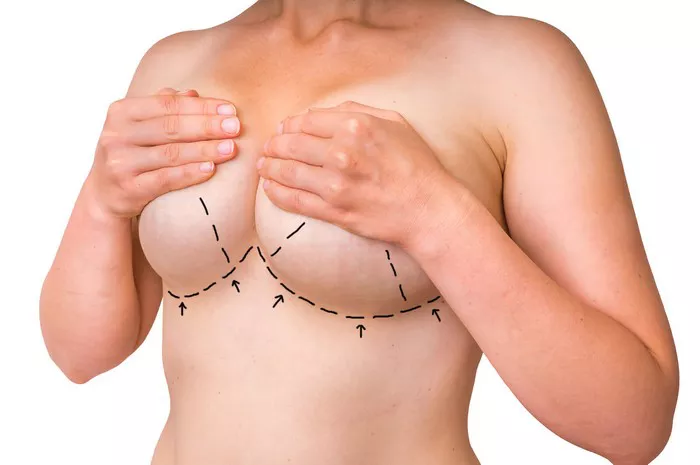Breast implants are a popular cosmetic surgery procedure that can enhance the size and shape of a woman’s breasts. While breast implants can provide many benefits, it’s important to understand that they are not permanent and may need to be replaced or removed over time. In this article, we’ll explore what happens after 20 years of breast implants and help you understand the potential risks and benefits of this procedure.
What are Breast Implants?
Breast implants are medical devices that are placed inside a woman’s breasts to enhance their size and shape. There are two main types of breast implants: saline and silicone. Saline implants are filled with sterile saltwater, while silicone implants are filled with a silicone gel. Both types of implants have an outer shell made of silicone.
Breast implants can be placed either above or below the chest muscle, depending on the patient’s individual needs and preferences. The procedure is typically performed under general anesthesia and can take anywhere from one to three hours, depending on the extent of the surgery.
After the procedure, patients will need to take some time to recover and heal. This may include wearing a special bra or compression garment, avoiding strenuous activity, and taking medications as prescribed. Your surgeon will also schedule follow-up appointments to monitor your progress and ensure that you are healing properly.
What Happens After 20 Years of Breast Implants?
While breast implants are designed to be long-lasting, they are not permanent and may need to be replaced or removed over time. The lifespan of breast implants can vary depending on a number of factors, including the type of implant, the patient’s age, and the quality of the implant.
After 20 years, it’s possible that breast implants may need to be replaced or removed due to a variety of factors. These can include implant rupture, capsular contracture, implant malposition, and changes in breast shape or size. It’s important to discuss these potential risks with your surgeon before undergoing the procedure to ensure that you have a clear understanding of what to expect.
Implant Rupture
One of the most common reasons for breast implant removal or replacement is implant rupture. This occurs when the outer shell of the implant develops a tear or hole, causing the saline or silicone filling to leak out. Implant rupture can be caused by a variety of factors, including trauma to the breast, natural wear and tear, or a defect in the implant itself.
If a saline implant ruptures, the saltwater filling will be absorbed by the body and the breast will deflate. This is typically not harmful, but the implant will need to be replaced. If a silicone implant ruptures, the gel filling can leak out into the breast tissue or surrounding areas, which can cause pain, swelling, and other complications. In this case, the implant will need to be removed and replaced.
Capsular Contracture
Another potential complication of breast implants is capsular contracture. This occurs when scar tissue forms around the implant, causing it to harden and become misshapen. Capsular contracture can be caused by a variety of factors, including infection, trauma, or a reaction to the implant material.
If capsular contracture occurs, the implant may need to be removed or replaced. In some cases, the scar tissue can be surgically removed and the implant can be repositioned to correct the problem.
Implant Malposition
Breast implants can also become malpositioned over time, meaning that they shift or move out of place. This can be caused by a variety of factors, including natural aging, weight fluctuations, or trauma to the breast. If the implant becomes malpositioned, it may need to be repositioned or replaced to correct the problem.
Changes in Breast Shape or Size
Over time, breasts may naturally change in shape or size, which can affect the appearance of breast implants. If the patient is unhappy with the way their breasts look after 20 years, they may choose to have the implants removed or replaced to achieve their desired results.
Benefits of Breast Implant Removal
While breast implants can provide many benefits, there are also some potential risks and complications associated with this procedure. In some cases, patients may choose to have their implants removed or replaced for a variety of reasons.
One of the main benefits of breast implant removal is improved comfort and mobility. Breast implants can be heavy and uncomfortable, especially after 20 years. Removing the implants can help to alleviate these symptoms and improve overall quality of life.
Another benefit of breast implant removal is improved appearance. Over time, breasts may naturally change in shape or size, and removing the implants can help to restore a more natural and youthful appearance.
Conclusion
Breast implants can provide many benefits, but it’s important to understand that they are not permanent and may need to be replaced or removed over time. After 20 years, breast implants may need to be replaced or removed due to a variety of factors, including implant rupture, capsular contracture, implant malposition, and changes in breast shape or size.
If you’re considering breast implants, it’s important to discuss these potential risks with your surgeon before undergoing the procedure. By understanding the potential risks and benefits of breast implants, you can make an informed decision that is right for you. If you already have breast implants and are experiencing complications or are unhappy with the results after 20 years, speak with your surgeon about the option of implant removal or replacement.


